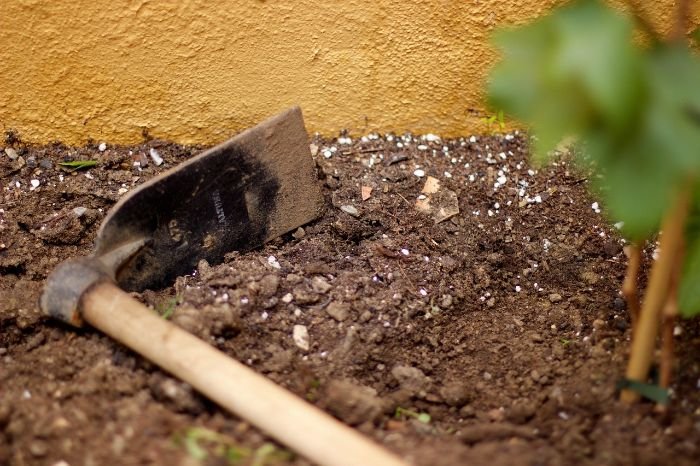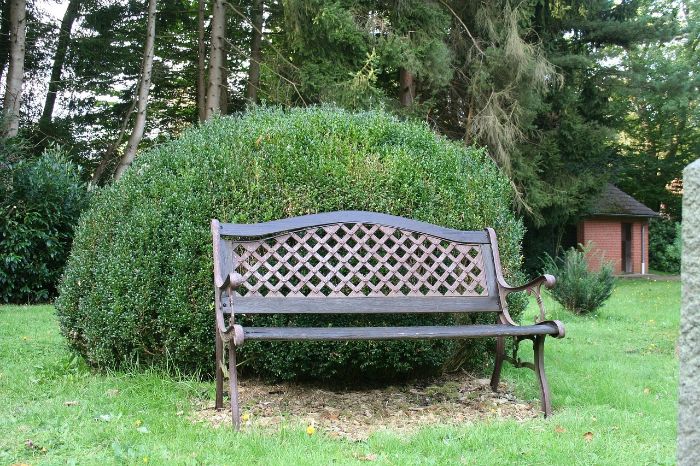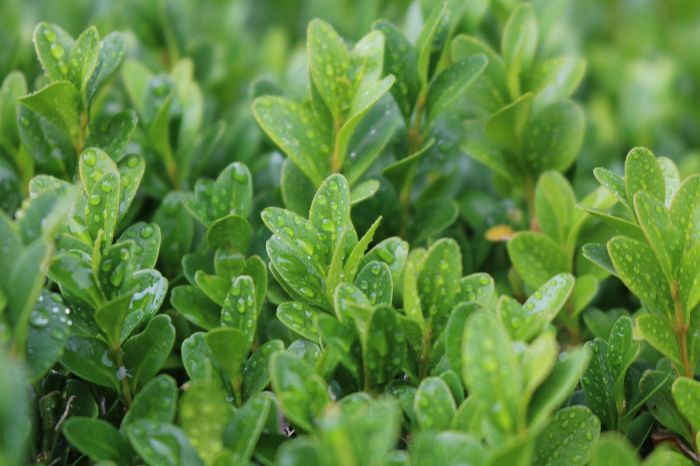Growing healthy boxwoods isn’t a matter of luck – it starts with proper soil preparation. Without the right drainage, soil structure, and nutrients, even the most careful planting may fail. This guide will show you how to prepare the ideal soil environment, ensuring your boxwoods stay vibrant and strong throughout the year.
Key Takeaways
- Proper soil preparation is fundamental for strong, resilient boxwoods.
- Good drainage, appropriate soil composition, and balanced nutrients are critical.
- Knowing the specific soil needs of boxwoods promotes long-term plant health.
- Well-managed soil dramatically improves growth, appearance, and resilience.
- Effective soil practices reduce the risk of common problems like root rot and poor growth.
Table of Contents
Understanding Boxwood Soil Requirements
While boxwoods are adaptable, they perform best under specific soil conditions that directly influence their growth and overall health. Understanding these needs is essential for establishing robust, long-lasting plants.
The Importance of Soil Type
Selecting the right soil type is critical for healthy boxwoods. They require soil that drains efficiently to prevent root rot, yet retains enough moisture to support sustained growth. Loamy and sandy soils strike this balance well, offering both aeration and moisture retention.
Ideal pH Levels for Boxwoods
Soil pH plays a significant role in the health of boxwoods. They thrive in soils with a pH range between 6.5 and 7.0. Regular soil testing ensures that pH levels remain optimal, preventing nutrient deficiencies often caused by overly acidic or alkaline conditions.
Nutrient Requirements for Healthy Growth
Boxwoods require a balanced nutrient profile to maintain vigor and resistance to pests. They benefit particularly from nitrogen-rich fertilizers, combined with balanced nutrient formulations. Regular soil testing identifies specific deficiencies, allowing targeted fertilization for optimal plant health.
Preparing the Soil for Successful Boxwood Planting
Preparing the soil for boxwoods begins with understanding their specific needs. Thorough soil analysis is crucial to ensure the right balance of nutrients, structure, and pH. Testing, amending, and maintaining optimal soil conditions lays the foundation for healthy, resilient plants.
Testing and Analyzing Your Soil
Conducting a soil test before planting boxwoods is an important first step. A comprehensive test reveals nutrient availability, pH levels, and drainage capacity. Home testing kits are convenient, but consulting local extension services can provide more detailed insights. Understanding your soil’s profile allows targeted improvements for optimal plant growth.
Enhancing Soil Drainage for Stronger Boxwood Roots
Effective drainage is crucial for boxwood health. If the soil retains excess water, incorporating organic matter such as compost improves aeration and drainage capacity. In cases of persistent waterlogging, establishing raised beds offers an excellent solution for promoting stronger, healthier root development.
Adjusting Soil pH for Boxwoods
Maintaining an appropriate soil pH is vital for boxwood health. Soil testing identifies whether adjustments are necessary, and detailed guidelines on managing pH levels can be found in the Boxwood Handbook by Lynn R. Batdorf. Adding lime raises soil pH, while elemental sulfur lowers it. Keeping pH levels between 6.0 and 7.5 ensures optimal nutrient availability and prevents growth limitations.
Choosing the Right Soil Amendments for Boxwoods
Selecting appropriate soil amendments supports vigorous boxwood growth. A strategic blend of organic and inorganic materials creates an environment conducive to healthy root development and sustained plant vitality.

Organic Matter and Composting
Incorporating organic matter into the soil significantly enhances boxwood growth. Compost improves the soil’s ability to retain moisture and essential nutrients while fostering beneficial microbial activity. These improvements lead to stronger root systems and more resilient plants. Regularly adding compost or other organic materials enriches the soil structure and maintains the consistent moisture levels boxwoods require.
Inorganic Amendments and Their Uses
Inorganic fertilizers supply essential nutrients such as nitrogen, phosphorus, and potassium quickly and efficiently. However, they must be applied carefully to avoid root damage and nutrient imbalances. Controlled and measured use ensures that boxwoods receive adequate nutrition, supporting healthy growth without the risks associated with over-fertilization.
Planting Boxwoods in Prepared Soil
Successful boxwood planting depends on both timing and proper technique. By following best practices, gardeners can establish vigorous, healthy shrubs. Selecting the right planting window is critical for ensuring strong root development and long-term plant health.
Timing and Techniques for Planting
Early spring and fall are the optimal seasons for planting boxwoods, providing cooler temperatures and balanced soil moisture ideal for root establishment. When planting, position the root ball slightly above the soil surface to promote healthy root expansion and minimize the risk of rot.
Tips for Successful Establishment
Ensuring strong root development during the first year is critical for boxwood success. Maintain consistent watering, particularly during dry periods, to support healthy growth. Applying a layer of mulch around the base of the plants conserves soil moisture and provides insulation against temperature extremes.

Maintaining Soil Health for Boxwoods
Maintaining healthy soil conditions is fundamental for thriving boxwoods. Regular soil management practices enhance nutrient availability, root health, and overall plant vigor, ensuring sustained growth and resilience.
Mulching for Moisture Retention
Mulching plays a critical role in preserving soil moisture for boxwoods. Applying a 2–3 inch layer of mulch helps regulate soil temperature, suppress weeds, and maintain consistent hydration levels, all of which contribute to stronger, healthier plants.
Regular Soil Testing and Monitoring
Routine soil testing is essential for maintaining optimal conditions for boxwoods. Conduct tests every two to three years to monitor nutrient levels and pH balance. Early detection of imbalances enables prompt corrective actions, supporting continued plant health and vigorous growth.
Conclusion
Successful boxwood cultivation begins with meticulous soil preparation. Providing the right soil structure, drainage, and nutrient balance creates an environment where boxwoods can thrive year-round. Understanding their soil needs and implementing consistent soil management practices ensures robust growth, vibrant foliage, and long-term plant health.
By maintaining optimal pH levels, enriching the soil with organic matter, and monitoring soil conditions regularly, gardeners can significantly enhance the beauty and vitality of their boxwoods. These evergreen shrubs not only add structure and elegance to garden landscapes but also offer enduring appeal through every season.
Commit to investing time in proper soil preparation and ongoing care, and you will enjoy lush, healthy boxwoods that elevate the overall aesthetic and resilience of your outdoor space for years to come.
FAQ
What is the best soil type for boxwoods?
Boxwoods perform best in well-drained sandy loam or loamy soils. While they tolerate a range of pH levels, consistently wet or compacted soils should be avoided to prevent root rot.
How do I test soil pH for boxwoods?
You can use an at-home soil testing kit or request a detailed analysis from a professional service. Aim for a pH between 6.5 and 7.0 to support optimal nutrient absorption.
What nutrients are important for healthy boxwoods?
Boxwoods benefit from fertilizers rich in nitrogen, along with a balanced supply of phosphorus and potassium. Soil testing identifies specific deficiencies, ensuring precise nutrient management and promoting strong, pest-resistant growth.
How can I improve soil drainage for boxwoods?
Incorporate organic matter such as compost to enhance soil structure and drainage. For persistently wet areas, planting boxwoods in raised beds significantly reduces the risk of root disease.
When should I plant boxwoods?
The ideal planting seasons for boxwoods are early spring and fall, allowing sufficient time for roots to establish before extreme heat or cold stress the plants.
How deep should boxwoods be planted?
Position the root ball slightly above the soil surface to promote proper drainage and prevent water accumulation that can cause root rot.
How does mulching benefit boxwoods?
Mulching conserves soil moisture, regulates soil temperature, and suppresses weed growth. Applying a 2–3 inch mulch layer around boxwoods supports consistent hydration and overall plant health.
How often should I test soil for boxwoods?
Conduct soil tests every two to three years to monitor nutrient levels and pH balance. Regular testing enables timely adjustments that support long-term boxwood health and vigor.










